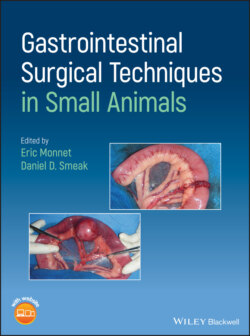Читать книгу Gastrointestinal Surgical Techniques in Small Animals - Группа авторов - Страница 43
3.3 Stapled or Hand‐Sutured Anastomosis
ОглавлениеStapled anastomoses are technically easier and faster but they do not replace adherence to the principles of good surgical technique for successful intestinal healing (Chassin et al. 1984). Regardless of technique, an adequate blood supply and absence of contamination or tension is paramount to successful repair. Linear staples in thicker visceral tissue may not purchase the strength holding layer on both sides of the staple line leading to a weakened repair (Snowden et al. 2016). It is critical that the correct staple leg length is chosen when visceral edges are edematous or inflamed. In most situations, linear staple cartridges with 3.5 mm staples are acceptable for most intestinal repairs in dogs and cats. Linear staples with 4.8 mm staples are chosen for thicker intestinal edges and for stomach repairs. Stapled anastomoses were not at more risk for dehiscence when performed in the face of septic peritonitis, unlike what has been encountered in hand‐sewn repairs in multiple retrospective studies (Snowden et al., 2016; Davis et al. 2018).
